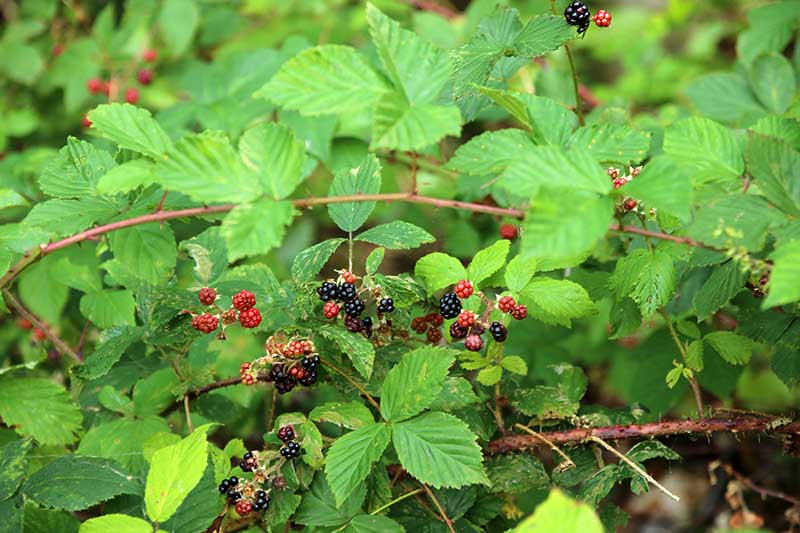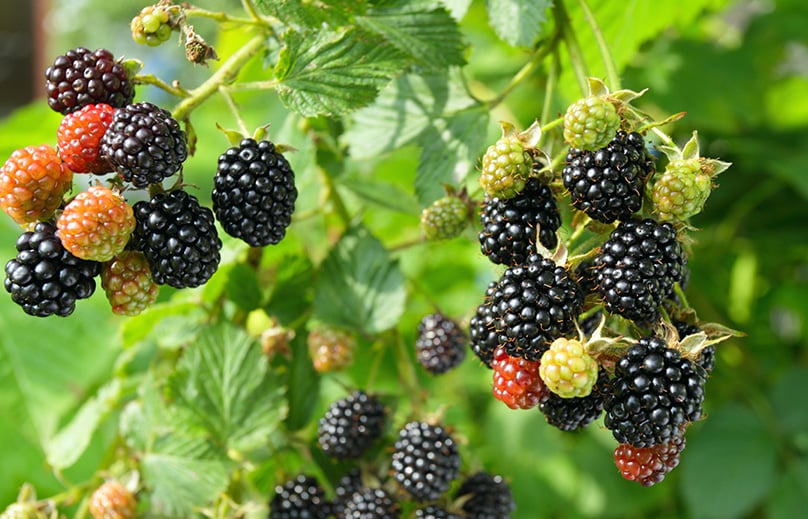What is a Blackberry, Anyway?
Blackberry plants have been a staple in many gardens and orchards for centuries, prized for their delicious fruit and versatility. But before we dive into the question of whether blackberry is a tree or a bush, it’s essential to understand the basics of this fascinating plant. Native to Europe and Asia, blackberries belong to the Rosaceae family, which includes other popular fruits like strawberries, raspberries, and roses. Today, blackberries are cultivated worldwide, with over 2,000 varieties available, each with its unique characteristics and growing requirements. As we explore the world of blackberry plants, one question remains: is blackberry a tree or a bush? In this article, we’ll delve into the botanical definitions, growth habits, and characteristics of blackberry plants to provide a clear answer to this question and uncover the truth behind the classification of this beloved fruit-bearing shrub.
Understanding the Difference Between Trees and Bushes
To determine whether blackberry is a tree or a bush, it’s essential to understand the botanical definitions of these two terms. Botanists define trees as perennial plants with a single stem, known as a trunk, that grows from the ground up to a certain height. Trees typically have a woody stem, a well-defined crown, and a root system that anchors the plant in the soil. In contrast, bushes are perennial plants with multiple stems that grow from the ground, often forming a dense cluster of stems. Bushes tend to be shorter than trees, with a more sprawling growth habit.
Another key difference between trees and bushes lies in their stem thickness and leaf arrangements. Tree stems are typically thicker and more rigid than those of bushes, with a more extensive branching system. Leaves on trees are often arranged in a specific pattern, such as alternate or opposite, whereas bushes tend to have leaves that are more scattered or clustered. By understanding these distinct characteristics, we can begin to classify blackberry plants and answer the question: is blackberry a tree or a bush?
How to Identify Blackberry Plants in the Wild
When venturing into the wild to identify blackberry plants, it’s essential to know what to look for. Blackberry plants typically grow in woodland edges, hedgerows, and along fences, where they can receive partial shade and well-drained soil. They often form dense thickets, making them difficult to distinguish from other shrubs. However, there are several key characteristics to help you identify blackberry plants.
Leaves: Blackberry leaves are typically dark green, oval-shaped, and have three to five leaflets. They are arranged alternately on the stem and have a pointed tip. The leaves are also serrated, with small teeth along the edges.
Stems: Blackberry stems, also known as canes, are biennial, meaning they grow one year and produce fruit the next. They are typically green or reddish-green, with a woody texture and a distinctive ridged pattern. The stems can grow up to 6 feet tall and have small, curved prickles.
Fruit: Blackberry fruit is a key identifier, with its distinctive aggregate structure comprising multiple small drupelets. The fruit is typically black, but can also be purple, red, or yellow, depending on the variety. The fruit grows on the tips of the canes, making it easily accessible.
By recognizing these characteristics, you can confidently identify blackberry plants in the wild and gain a deeper understanding of their growth habits. This knowledge will also help you answer the question: is blackberry a tree or a bush?
The Anatomy of a Blackberry Plant
To fully understand whether blackberry is a tree or a bush, it’s essential to delve into its physical structure. Blackberry plants have a unique anatomy that sets them apart from other fruit-bearing shrubs. At the heart of the plant lies the root system, which consists of a perennial crown and a network of roots that spread out in search of water and nutrients.
The stems, also known as canes, are biennial, meaning they grow one year and produce fruit the next. These canes are woody, with a ridged pattern and small, curved prickles. They can grow up to 6 feet tall, arching over to form a dense thicket. The canes are also divided into two types: primocanes, which grow from the crown and produce leaves, and floricanes, which produce flowers and fruit.
The leaves of the blackberry plant are dark green, oval-shaped, and have three to five leaflets. They are arranged alternately on the stem and have a pointed tip. The leaves are also serrated, with small teeth along the edges. The plant’s leaf structure allows it to maximize sunlight absorption and photosynthesis, making it an efficient producer of fruit.
By understanding the anatomy of a blackberry plant, we can better appreciate its unique characteristics and growth habits. This knowledge will also help us answer the question: is blackberry a tree or a bush? The answer lies in the plant’s physical structure and how it compares to the botanical definitions of trees and bushes.
So, is Blackberry a Tree or a Bush?
After exploring the botanical definitions of trees and bushes, identifying blackberry plants in the wild, and delving into their anatomy, we can now answer the central question: is blackberry a tree or a bush? Based on the evidence, it’s clear that blackberry is, in fact, a bush. This classification is supported by the plant’s growth habits, stem thickness, and leaf arrangements.
Blackberry plants do not possess the characteristic traits of trees, such as a single main trunk, a tall stature, or a broad canopy. Instead, they exhibit the typical characteristics of bushes, including a low-growing habit, woody stems, and a dense, thicket-like growth pattern. Furthermore, blackberry plants produce fruit on canes that grow from the crown, rather than on branches that grow from a central trunk.
The answer to the question “is blackberry a tree or bush” has significant implications for gardening practices. By understanding blackberry’s classification, gardeners can adopt the most effective pruning, training, and harvesting techniques to maximize fruit production and maintain the health of their plants. In the next section, we’ll explore the practical implications of blackberry’s classification and provide actionable advice for gardeners.
In conclusion, the answer to the question “is blackberry a tree or bush” is clear: blackberry is a bush. This understanding is crucial for successful gardening and appreciation of this versatile plant. By recognizing blackberry’s classification, we can unlock its full potential and enjoy its delicious fruit for years to come.
Practical Implications of Blackberry’s Classification
Now that we’ve established that blackberry is a bush, it’s essential to explore the practical implications of this classification on gardening practices. Understanding blackberry’s classification as a bush affects how we approach pruning, training, and harvesting these plants.
For instance, pruning blackberry bushes requires a different approach than pruning trees. Blackberry bushes benefit from regular pruning to promote healthy growth, increase fruit production, and reduce disease susceptibility. Gardeners should focus on removing dead, diseased, or damaged canes, as well as trimming back primocanes to encourage fruiting.
Training blackberry bushes is also crucial for optimal fruit production and plant health. By providing support for the canes, gardeners can encourage upright growth, reduce tangling, and make harvesting easier. This can be achieved using trellises, stakes, or cages.
Harvesting blackberries is another area where understanding the plant’s classification is vital. Blackberry bushes typically produce fruit on floricanes, which grow from the crown. Gardeners should harvest blackberries regularly to encourage the plant to produce more fruit and prevent over-ripening.
By recognizing blackberry as a bush, gardeners can adopt the most effective strategies for growing and maintaining these plants. This knowledge will help readers optimize their gardening practices, leading to healthier plants, increased fruit production, and a more enjoyable gardening experience.
Common Misconceptions About Blackberry Plants
Despite their popularity, blackberry plants are often shrouded in misconceptions. One common myth is that blackberry plants are invasive and difficult to control. While it’s true that blackberry plants can spread quickly through underground stolons, this can be managed with regular pruning and containment strategies.
Another misconception is that blackberry plants are challenging to grow. However, with proper soil preparation, watering, and sunlight, blackberry plants can thrive in a variety of environments. In fact, blackberry plants are relatively low-maintenance compared to other fruit-bearing shrubs.
Some people believe that blackberry plants require a lot of space to grow. While it’s true that blackberry plants can spread out, they can also be trained to grow vertically using trellises or cages, making them a great option for small gardens or containers.
By understanding the facts behind these common misconceptions, gardeners can approach blackberry cultivation with confidence. Remember, understanding whether blackberry is a tree or bush is crucial for successful gardening practices. By recognizing blackberry as a bush, gardeners can adopt the most effective strategies for growing and maintaining these plants.
Now that we’ve addressed these common misconceptions, we can appreciate the versatility and value of blackberry plants. With the right knowledge and techniques, anyone can enjoy the delicious fruit and beauty of these wonderful plants.
Conclusion: Demystifying the Blackberry Plant
In conclusion, the question “is blackberry a tree or bush” has been thoroughly explored, and the answer is clear: blackberry is a bush. By understanding the botanical definitions of trees and bushes, identifying blackberry plants in the wild, and examining their anatomy, we’ve established that blackberry plants exhibit characteristics typical of bushes.
This classification has significant implications for gardening practices, such as pruning, training, and harvesting. By recognizing blackberry as a bush, gardeners can adopt effective strategies for growing and maintaining these plants, leading to healthier plants, increased fruit production, and a more enjoyable gardening experience.
Moreover, dispelling common misconceptions about blackberry plants has allowed us to appreciate their versatility and value. With the right knowledge and techniques, anyone can enjoy the delicious fruit and beauty of these wonderful plants.
In summary, understanding whether blackberry is a tree or bush is crucial for successful gardening and appreciation of this versatile plant. By recognizing blackberry as a bush, gardeners can unlock the full potential of these amazing plants and enjoy the many benefits they have to offer.



:max_bytes(150000):strip_icc()/44013960974_68256db9c8_k-82fff34f47dd46379ccb79133cb6af20.jpg)


/GettyImages-995481260-5c8fc814c9e77c0001a926dd.jpg)
